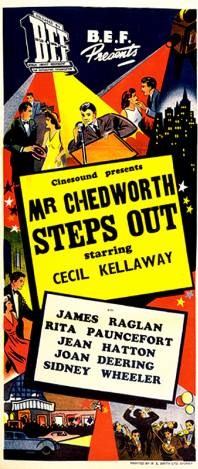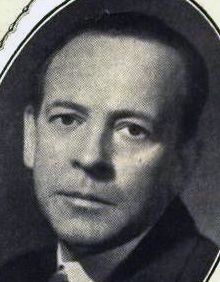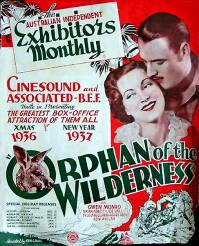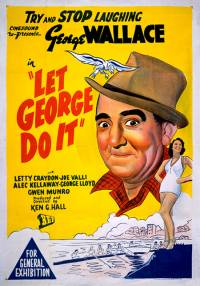
Kenneth George Hall was an Australian film producer and director, considered one of the most important figures in the history of the Australian film industry. He was the first Australian to win an Academy Award.

Cinesound Productions Pty Ltd was an Australian feature film production company. Established in June 1931, Cinesound developed out of a group of companies centred on Greater Union Theatres that covered all facets of the film process, from production to distribution and exhibition. Cinesound Productions established a film studio as a subsidiary of Greater Union Theatres Pty Ltd based on the Hollywood model. The first production was On Our Selection (1932), which was an enormous financial success.

Shirley Ann Richards was an Australian actress and author who achieved notability in a series of 1930s Australian films for Ken G. Hall before moving to the United States, where she continued her career as a film actress, mainly as a Metro-Goldwyn-Mayer starlet. Her best known performances were in It Isn't Done (1937), Dad and Dave Come to Town (1938), An American Romance (1944), and Sorry, Wrong Number (1948). In the 1930s, she was the only Australian actor under a long-term contract to a film studio, Cinesound Productions. She subsequently became a lecturer and poet.

Dad and Dave Come to Town is a 1938 Australian comedy film directed by Ken G. Hall, the third in the 'Dad and Dave' comedy series starring Bert Bailey. It was the feature film debut of Peter Finch and is one of the best known Australian films of the 1930s.

Mr. Chedworth Steps Out is a 1939 Australian comedy film directed by Ken G. Hall starring Cecil Kellaway. Kellaway returned to Australia from Hollywood to make the film, which features an early screen appearance by Peter Finch.

Frank Harvey was a British-born actor, producer, and writer, best known for his work in Australia.
The Silence of Dean Maitland is a 1934 Australian film directed by Ken G. Hall, and based on Maxwell Gray's 1886 novel of the same name. It was one of the most popular Australian films of the 1930s.

Thoroughbred is a 1936 Australian race-horse drama film directed by Ken G. Hall, partly based on the life and career of Phar Lap. Hollywood star Helen Twelvetrees was imported to Australia to appear in the film. The film also stars Frank Leighton and John Longden.

Orphan of the Wilderness is a 1936 Australian feature film from director Ken G. Hall about the adventures of a boxing kangaroo. It starred Brian Abbot who disappeared at sea not long after filming completed.
It Isn't Done is a 1937 Australian comedy film about a grazier who inherits a barony in England.

Lovers and Luggers is a 1937 Australian film directed by Ken G. Hall. It is an adventure melodrama about a pianist who goes to Thursday Island to retrieve a valuable pearl.
Tall Timbers is a 1937 action melodrama set in the timber industry directed by Ken G. Hall and starring Frank Leighton and Shirley Ann Richards.

Let George Do It is a 1938 comedy starring popular stage comedian George Wallace. It was the first of two films Wallace made for Ken G. Hall at Cinesound Productions, the other one being Gone to the Dogs (1939). Hall later called Wallace "in my opinion, easily the best comedian that this country has produced."
Gone to the Dogs is a 1939 musical comedy vehicle starring George Wallace. It was the second of two films he made for director Ken G. Hall, the first being Let George Do It (1938).

Dad Rudd, M.P. is a 1940 comedy that was the last of four films made by Ken G. Hall starring Bert Bailey as Dad Rudd. It was the last feature film directed by Hall prior to the war and the last made by Cinesound Productions, Bert Bailey and Frank Harvey.
Come Up Smiling is a 1939 Australian comedy film starring popular American stage comedian Will Mahoney and his wife Evie Hayes. It was the only feature from Cinesound Productions not directed by Ken G. Hall.
100,000 Cobbers is a 1942 dramatised documentary made by director Ken G. Hall for the Australian Department of Information during World War II to boost recruitment into the armed forces. Grant Taylor, Joe Valli and Shirley Ann Richards play fictitious characters.
Typhoon Treasure is a 1938 Australian adventure film directed by Noel Monkman and starring Campbell Copelin, Gwen Munro, and Joe Valli. It is set in New Guinea although shot on the Great Barrier Reef and the Queensland coast. It was Monkman's first dramatic feature film after several years making documentaries.
Alec Kellaway was a South African–born actor best known for his work in Australian theatre and film, notably playing a number of character roles for director Ken G. Hall. He was the brother of Cecil Kellaway. He also worked as a producer in vaudeville and helped run the Talent School at Cinesound Productions.
Frederick Joseph Thwaites was an Australian novelist whose books sold over four million copies. He was best known for his first work The Broken Melody, which was adapted into a 1938 film.











